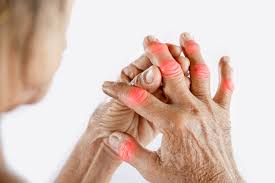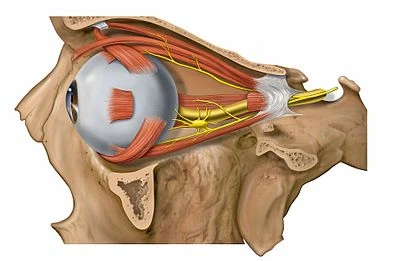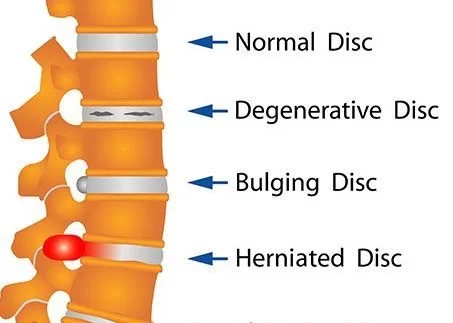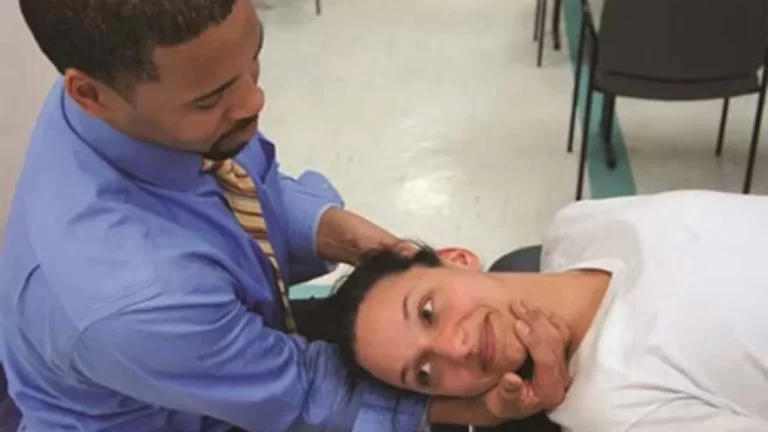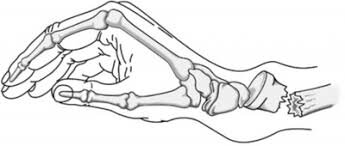What is Dactylitis- Sausage finger?
- Dactylitis is one type of inflammatory disease in the fingers or toes.
- One of the ways the body’s immune system responds to sickness and injury is through inflammation.
- Inflammation causes swelling, pain, and other physical changes while the body is fighting an infection.
- Symptoms incorporate swelling in one or more digits, most commonly affecting the whole hand or foot.
- The swelling may provide the fingers with a bloated, sausage-like appearance.
- This swelling can be painful and make it more difficult to mobile the affected area.
- Dactylitis may happen because of an infection or because of some change in the immune system.
- It is generally the result of an autoimmune condition.
- Autoimmune conditions cause the immune system to attack fine tissues.
Table of Contents
Which types of arthritis does Dactylitis occur with?
- Spondyloarthritis refers to types of arthritis that generally influence the joints and the tissues where tendons and ligaments connect to the bones.
- One of the most general forms of spondyloarthritis is psoriatic arthritis.
- Dactylitis happens in 16–49% of individuals with psoriatic arthritis, according to one paper.
- Almost identical forms of dactylitis can also happen in reactive arthritis.
- Reactive arthritis grows in response to infections in some different parts of the body.
- Bacterial infections of the intestine, like salmonella, and sexually transmitted infections (STIs), like chlamydia, are the most general causes of reactive arthritis.
- The same paper claims that dactylitis affects around 5% to 9.6% of individuals with gout.
- In cases of gout, overconsumption of uric acid deposits in the joints, cause inflammation.
- An individual with rheumatoid arthritis does not get dactylitis, so some physicians can use the presence of dactylitis to help diagnose the form of arthritis a patient has.
Symptoms of Dactylitis
- The first and foremost symptoms of dactylitis are swollen, painful digits and difficulty moving the injured areas.
- The inflammation can also cause the patient’s joints to feel warm.
- In addition, other additional symptoms differ set up on the underlying cause.
- For example, dactylitis caused by psoriatic arthritis (PsA) does not have uniform joint participation.
- This means that the single digits may swell differently.
- For example, The left hand can be inflamed, while the right hand is unaffected.
- Rheumatoid arthritis (RA) causes uniform patterns of swelling in the body hands, and feet.
Dactylitis causes
- PSA is the inflammatory joint disease most related to dactylitis.
- PSA is an autoimmune disease that causes the immune system to attack good tissue.
- This may trigger painful, damaging inflammation in the joints and the tissues surrounding the tendons.
Psoriatic arthritis (PsA)
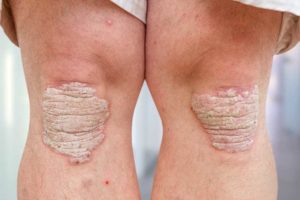
- PSA is the inflammatory joint disease most related to dactylitis.
- PSA is an autoimmune disease that causes the immune system to attack good tissue.
- This may trigger painful, damaging inflammation in the joints and the tissues surrounding the tendons.
There are five types of PsA:
- Asymmetric PsA
- Symmetric PsA
- Distal interphalangeal predominant PsA
- Psoriatic spondylitis, which affects the spine
- Psa mutilans, which affect bone tissue
- The swelling and deformity in PsA may remain once the inflammation is gone.
Rheumatoid arthritis (RA)
- RA is an autoimmune disease that causes the immune system to criticize the joints.
- This results in tissue inflammation near the joints.
- Dactylitis is not a hallmark feature of RA, but the swelling from the inflammation may be sausage-like.
- RA usually affects the following:
- Hands
- Wrists
- Feet
- Ankles
- Elbows
- Knees
- Temporomandibular joint
- The swelling in RA can decrease with treatment.
Reactive arthritis
- Infection in a part of the body may trigger reactive arthritis.
- It is often the result of infections in the:
- Genitals
- Urinary tract
- Intestines
- Symptoms normally develop 1 to 3 weeks after exposure to the cause of the infection.
The bacteria that often for causing reactive arthritis are:
- Salmonella
- Shigella
- Yersinia
- Campylobacter
- Reactive arthritis is not contagious, but too many of the bacteria that cause this type of arthritis may be found in food transmitted through sexual contact.
This type of arthritis can also cause:
- Stiffness
- Eye inflammation
- Rash on your palms or soles
- Urinary problems
- In the early stages of reactive arthritis, symptoms can be mild and can go unnoticed.
- They may occasionally present over several weeks or months.
- Urinary symptoms can appear first, while arthritis is normally the last symptom.
Sickle cell disease (SCD)
- Dactylitis is one of the primary symptoms of sickle cell disease (SCD), a blood disorder causing the red blood cells that transfer oxygen through the body to become sticky and hard.
- On the contrary flattened discs, the cells form a crescent shape and look like farm tools called a sickle.
- SCD frequently causes a shortage of red blood cells.
- Sickle cells can clog small blood vessels, which results in issues like pain and infection.
- The symptoms of SCD generally start to materialize in the first year of life, at about 5 months of age.
- Dactylitis is very common in little ones with SCD.
Other early SCD symptoms include:
- yellowish skin color
- yellowish whites of the eyes
- Fatigue
Other causes
The following are some of the other conditions that, in rare cases, can cause dactylitis to occur:
Tuberculosis:
- This infectious bacterial disease that may cause inflammation of the lungs can also cause inflammation of bones in the hands and feet, specifically in little ones and adolescents.
Syphilis:
- If it is left untreated, this sexually transmitted infection may travel to the fetus during pregnancy.
- Babies born with congenital syphilis can develop syphilitic dactylitis in babies’ fingers and toes.
Sarcoidosis:
- Sarcoidosis is an autoimmune condition that causes inflammation of the heart, lungs, and other organs.
- It influences adults between 20 and 40 years old. Sarcoid dactylitis can occur in the small bones of the hands and feet.
Gout:
- Gout is a type of arthritis.
- This condition, which is most frequently caused by an increment of uric acid, may lead to pain and swelling in foot joints.
- About 5% to 9.6% of individuals with gout may develop dactylitis.
Lyme disease:
- Lyme disease is generally associated with dactylitis.
- After infection, the organism that causes Lyme disease may trigger reactive arthritis.
How dactylitis is diagnosed?
- Dactylitis has too many underlying causes.
- A doctor can order many various tests prior to making a diagnosis.
- When the person visits a doctor, make sure that person has a list of:
- Their symptoms
- Medications
- Critical medical and personal information
- The patient can also want to check whether anyone in the family has had similar issues.
- This information may help the doctor make a proper diagnosis.
Testing may include:
Physical deformities-
- Look out for swollen joints, fingernail irregularities, and tender feet.
Imaging tests-
- Like X-rays, MRI, or a musculoskeletal ultrasound (MSK), which gives pictures of the joints, ligaments, and tendons.
Laboratory tests –
- Like a joint fluid test to find out gout or a blood test to find out RA.
- A few years ago, researchers introduced a new ultrasound scoring system called Dactylitis Global Sonographic to help identify the severity of dactylitis in the hands of individuals with PsA and to better assess the response to treatment.
- With this system, which was first used in clinical trials, individuals are given a score from 0 to 25 for each hand.
- The score is calculated by putting on the scores for each lesion of every involved finger based on an MSK’s results.
Dactylitis and disease severity
- For individuals with PsA, dactylitis is a marker of the disease’s severity.
- Finger and toe joints with dactylitis can have
- remarkably more damage than joints without it.
- Dactylitis can designate other health risks as well.
- The risk of future cardiovascular events like a heart attack or stroke increases by 20% for each finger or toe with dactylitis.
Treatment of Dactylitis
Medical treatment
Nonsteroidal Anti-inflammatory Drugs (NSAIDs)
- The first and foremost drug the doctor recommends for dactylitis will probably be a nonsteroidal anti-inflammatory drug or NSAID.
- These medications ease swelling and pain. Some, such as ibuprofen (Advil, Midol, Motrin) and naproxen (Aleve), are obtainable over the counter.
- Others are prescription-only.
- Below are the some of many examples:
- Meloxicam (Mobic)
- Nabumetone (Relafen)
- Sulindac (Clinoril)
- While NSAIDs can reduce some symptoms, they often do not do enough to address the problem.
- The patent may need stronger medications.
Cortisone Shots
- Cortisone shots (injections of corticosteroids) typically follow NSAIDs.
- They give powerful medicine directly to involved joints to reduce pain and swelling.
- The physician may use ultrasound or a type of X-ray called fluoroscopy to guide the needle.
- Like all drugs, these shots may have detrimental effects.
- They include:
- Cartilage or nerve damage
- Death or thinning of nearby bone
- Joint infection
- Tendon problems
Disease-Modifying Antirheumatic Drugs (DMARDs)
- Cyclosporine
- Leflunomide
- Methotrexate
- SulfasalazineDisease-Modifying Antirheumatic Drugs (DMARDs)
- Some doctors prescribe disease-modifying antirheumatic drugs for dactylitis.
- These drugs aim at the underlying disease to slow or stop joint damage.
- They may also ease some symptoms.
Exercise therapy treatment-
- It includes hand, finger, and foot exercises.
Make a Fist–
Benefit
- Hand and finger exercises may help strengthen the hands and fingers, increase the range of motion, and reduce pain.
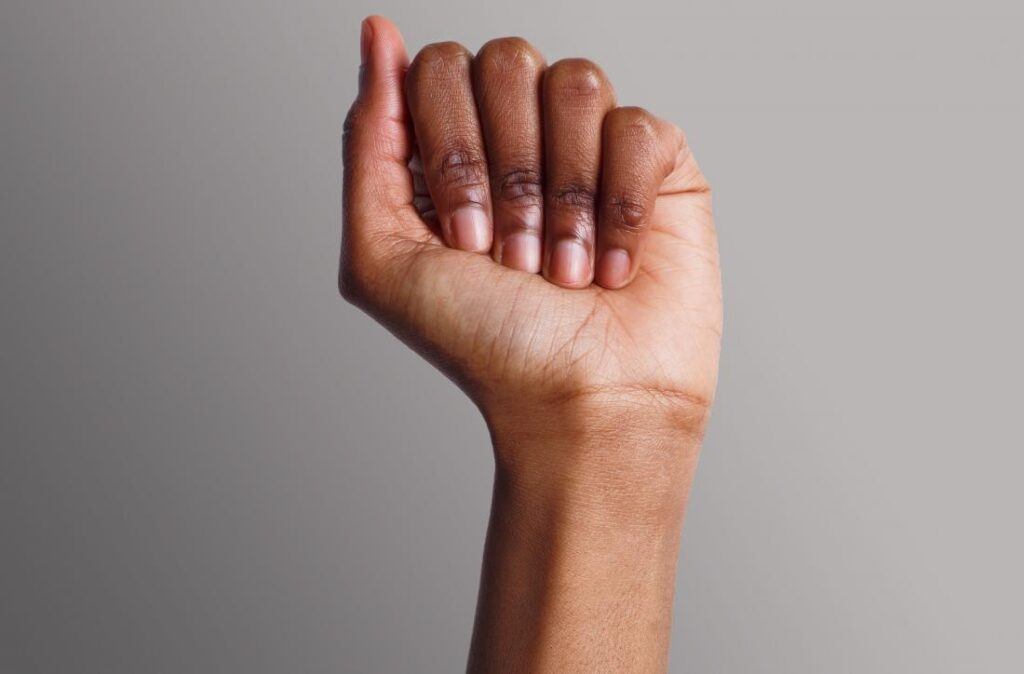
How to perform?
- Stretch only until the person feels tightness. The person should not experience pain.
- Start with this simple stretch:
- Make a Fist.
- Just make a gentle fist, wrapping the thumb across the fingers.
- Maintain this position for thirty to sixty seconds.
- Release and spread the fingers wide.
- Repeat with both hands at least four to five times.
Finger Stretch-
Benefit
- Apply this stretch to help with pain relief and increase the range of motion in the hands.
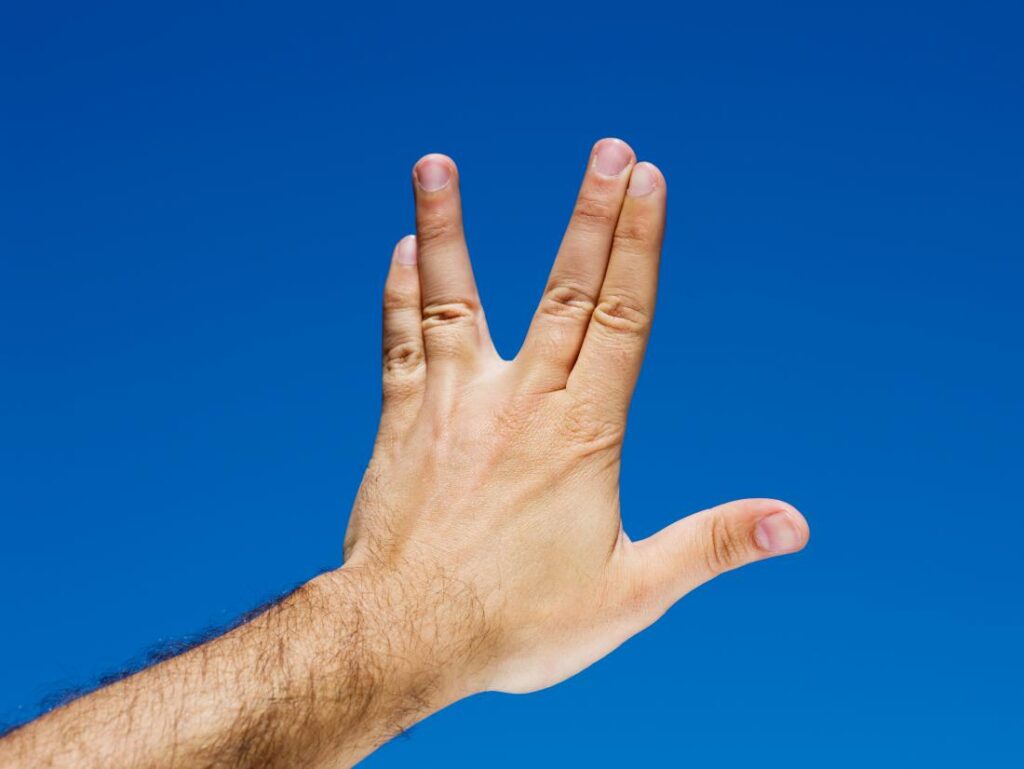
How to perform?
- Place the hand palm-down on a table or other flat surface.
- Gently straighten the fingers as flat as a person can against the surface without damaging the joints.
- Maintain this stretch for 30 to 60 seconds and then release.
- Repeat at least four to five times with each hand.
Claw Stretch
Benefit
- This stretch helps increase the range of motion in the fingers.
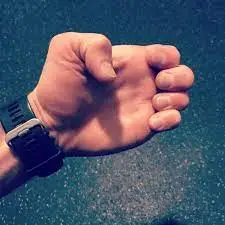
How to perform?
- Hold the hand out in front of the person, palm facing the patient.
- Bend the fingertips down to touch the base of each finger joint.
- The hand should look a little like a claw.
- Maintain this stretch for 30 to 60 seconds and release.
- Repeat at least four to five times on each hand.
Grip Strengthener
Benefit
- This exercise may make it easier to open door knobs and grasp things without dropping them.
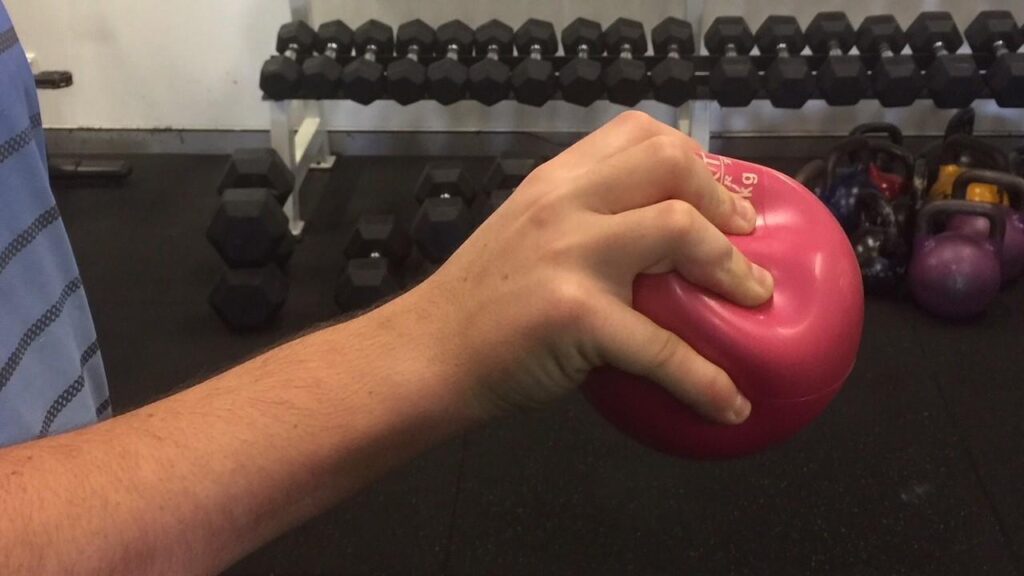
How to perform?
- Place a soft ball in the palm and squeeze it as hard as the person can.
- Maintain this pose for some time and release.
- Do it a further 10 to 15 times on both hands.
- Do this pose 2 to 3 times a week, but rest the hands for 48 hours in between sessions.
- Do not do this exercise if the thumb joint is damaged.
Pinch Strengthener
Benefit

- This exercise may help strengthen the muscles of the fingers and thumb.
- It may help the person to turn the keys, open food packages, and use the gas pump more easily.
How to perform?
- Pinch a soft foam ball or some putty among the tips of the fingers and the thumb.
- Hold on to this pose for 30 to 60 seconds.
- Do it a further 10 to 15 times on each hand.
- Perform this exercise two to three times a week, but rest the hands for 48 hours in between sessions.
- Do not do this exercise if the thumb joint is damaged.
Finger Lift
Benefit
- Use this exercise to increase the range of motion and flexibility in the fingers.
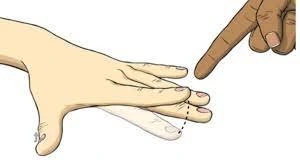
How to perform?
- Put the hand flat, palm down, on a table or other surface.
- Slowly lift one finger at a time off of the table and then lower it.
- The patient may also lift all the fingers and thumb at once, and then lower.
- Do it further 8 to 12 times on both hands.
Thumb Extension
Benefit-
- Strengthening the muscles of the thumbs may help the patient to grab and lift heavy things such as cans and bottles.
How to perform?
- Put the hand flat on a table.
- Muffle a rubber band around the hand at the base of the finger joints.
- Gently move the thumb away from the fingers as far as the patient can.
- Hold this extension pose for 30 to 60 seconds and release.
- Repeat ten to fifteen times with both hands.
- The person can do this exercise two to three times a week, but rest the hands for 48 hours in between sessions.
Thumb Flex
Benefit-
- This exercise helps improve the range of motion in the thumbs.
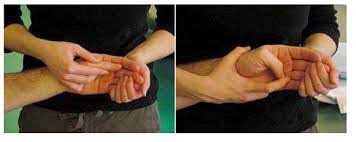
How to perform?
- Begin with the hand out in front of the patient, palm up.
- Extend the thumb away from the other fingers as far as the patient can.
- Then bend the thumb across the palm so it touches the base of the little finger.
- Hold on to this pose for 30 to 60 seconds.
- Repeat at least four to five times with both thumbs.
Thumb Touch
Benefit
- This exercise helps improve the range of motion in the thumbs, which helps with activities such as picking up the toothbrush, fork, spoon, and pens when you write.
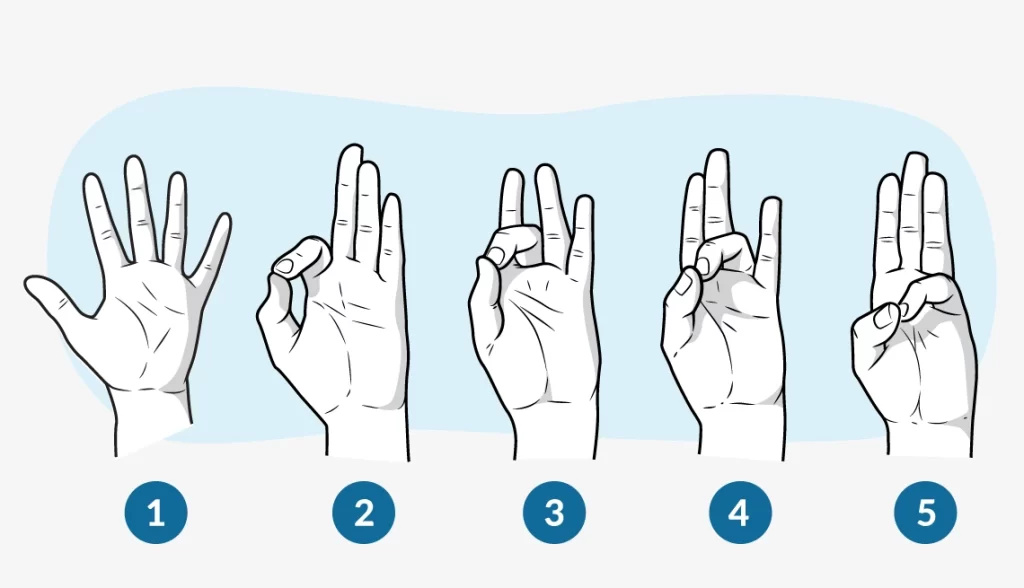
How to perform?
- Hold the hand out in front of you, with the wrist straight.
- Slowly touch the thumb to each of the four fingertips, one at a time, making the shape of an “O.
- ” Maintain this stretch position for 30 to 60 seconds.
- Repeat at least four to five times on each hand.
Thumb Stretches
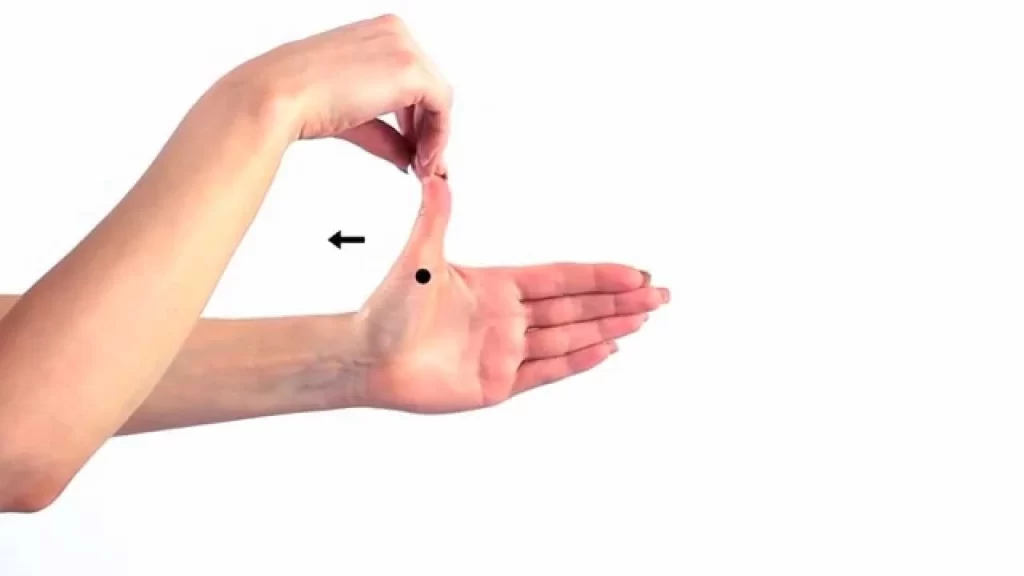
How to perform?
- Try these two stretches for the thumb joints.
- Hold the hand out, palm facing you.
- Slowly bend the tip of the thumb down toward the base of the index finger.
- Maintain this stretch position for 30 to 60 seconds.
- Release and do it a further four to five times.
An exercise tip
How to perform?
- If your hands and fingers feel painful and stiff, try warming them up before the exercise.
- This may make it easier to move and stretch.
- Use a hot pack or soak them in warm water for about five to ten minutes.
- Or, for a deeper warmth, rub some oil on the hands, put up the pair of rubber gloves, and then soak them in warm water for a few minutes.
Play With Clay

- Playing with putty or clay is the easiest way to improve the range of motion in the fingers and strengthen the hands at the same time.
- And it would not even experience like exercise.
- Just follow the kids’ lead — squish the clay into a ball, roll it into long”snakes” with the palms, or use the fingertips to pinch spikes on a dinosaur.
Foot exercise-
Achilles tendon and plantar fascia stretch-

How to perform?
- Wrap the towel around the ball of the foot and pull the toes towards the body, keeping the knee straight.
- Maintain this stretch for 30 seconds.
- Repeat three to four times on both the foot.
Plantar fascia stretch
How to perform?
- Start with a sitting position and rest the arch of the foot on a round object, like a tin of beans.
- Roll the foot on the tin in every direction for some time (1 or 2 minutes).
- Do it further twice or thrice a day.
Sitting plantar fascia stretch
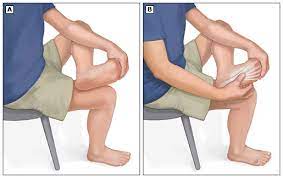
How to perform?
- Start with a sitting position and cross one foot over the opposite knee.
- Grab the base of the toes and pull them back towards the body, until the person experiences a comfortable stretch.
- Maintain this stretch for 15-20 seconds. Repeat this three to four times.
Wall push
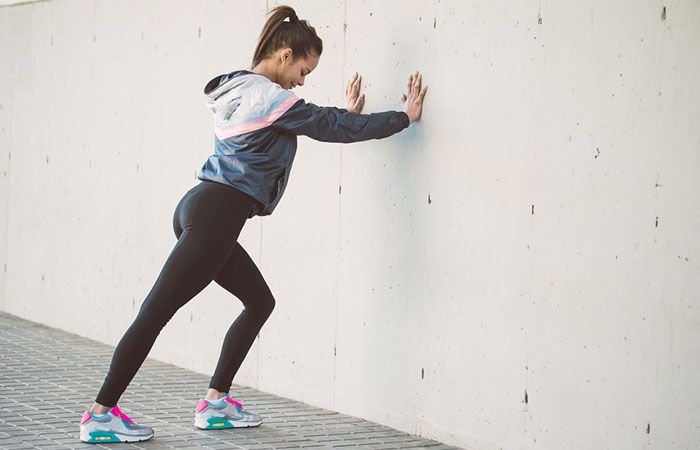
How to perform?
- Facing a wall, put up both hands on the wall at shoulder height and place one foot in front of the other.
- The ahead foot should be around 30cm (12 inches) from the wall.
- Using the front knee bent and the back knee straight, bend the front knee towards the wall until the calf in the back leg feels tight.
- Relax and repeat ten to twelve times.
- Repeat but take out the back foot forward a little, so that the back knee is slightly bent.
- Repeat this ten to twelve times.
Ankle range of motion
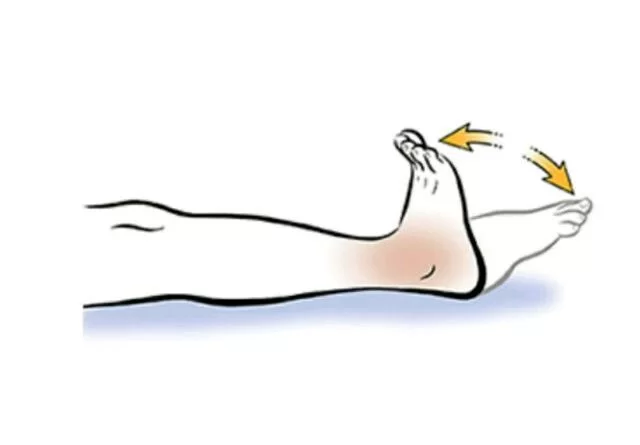
How to perform?
- Bend the ankle up towards the body as far as possible, then point the toes away from the body.
- Repeat this ten times.
Ankle rotation
How to perform?
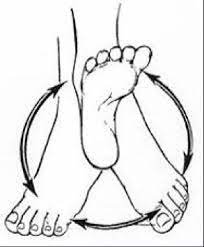
- Move the ankle around gently in a circle. Do this ten times one way, then repeat in the opposite direction.
Towel pickup

How to perform?
- Sit down with a towel on the floor in front of the person.
- Keeping the heel on the ground, take up the towel by scrunching between the toes.
- Repeat ten to twenty times.
- As the improvement, add a small weight, like a tin of beans, to the towel.
Standing heel raise

How to perform?
- Using a counter or chair for support, rise up on your tiptoes, with the knees straight. Gently lower the feet back down.
- Repeat this ten times.
Toe spread
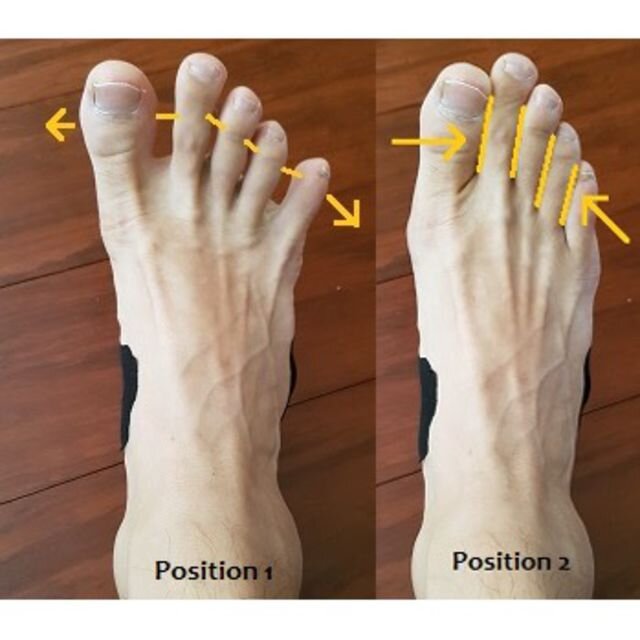
How to perform?
- Start with the feet resting on the floor, and spread the toes apart as far as possible.
- Maintain for 5 seconds.
- Repeat this exercise ten times.
Alphabet writing
How to perform?

- While sitting down, write the alphabet in the air with the big toe, by only moving the ankle.
- Try to write the whole alphabet twice or thrice a day.
Ankle out
- Make a loop out of a piece of an elastic fitness band, and maintain it in place, either with the leg of a table or chair or with the other foot.
- Keep one foot in the loop.
- Keeping the heel fixed on the ground, turn the toes outwards against the resistance of the band.
- Bring the foot back to the original position gently.
- Build up to repeating this ten times, and doing the set three to four times a day.
How to perform?
FAQ
Furthermore, for medical treatments, home remedies for dactylitis may include:
Cold packs or soaking hands in chilled water.
Wearing compression gloves or finger sleeves.
Utilizing warm paraffin wax, icy hot, or other warming treatments.
Keeping fingers mobile with crochet or knitting, a stress ball, or flex and release.
In the case of sickle cell-related dactylitis, the swelling generally goes away on its own. Although, too many causes of dactylitis are not treated for chronic conditions. These conditions can need ongoing treatment and management.
However, there is no cure for PsA, the Dactylitis will subside or completely resolve as the root condition is brought under better control. Rheumatoid Arthritis (RA) is an inflammatory, auto-immune disease that causes higher damage to joints, organs, and body systems because the body’s immune system attacks them.
They, therefore, take a longer time to strengthen in response to an exercise program. While in some cases can require 6 months or even longer to recover, most cases will resolve within 2-3 months.
Dactylitis is a general feature in all forms of spondyloarthropathy, including psoriatic arthritis, reactive arthritis, and ankylosing spondylitis. Dactylitis happens in about one-third of patients with psoriatic arthritis, with the feet being generally affected.

